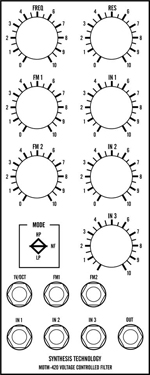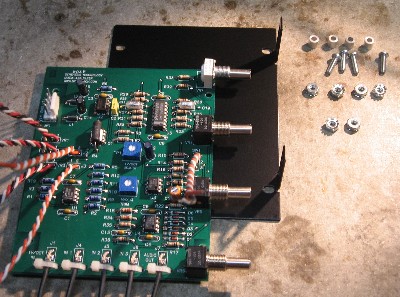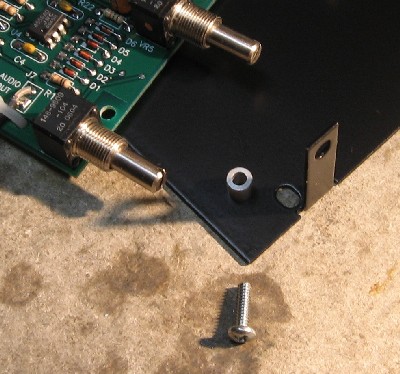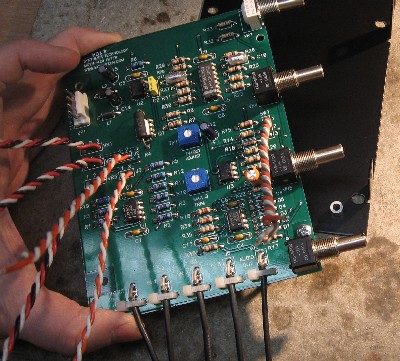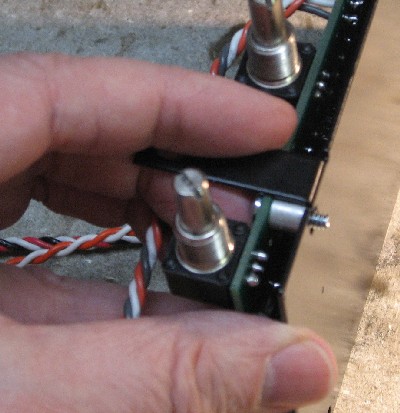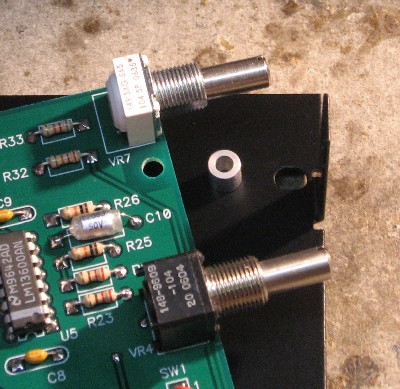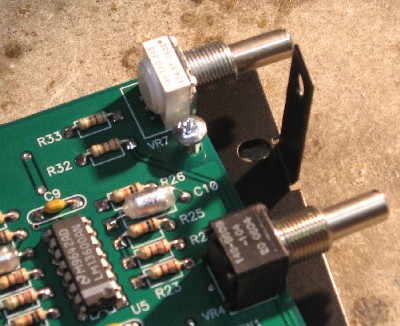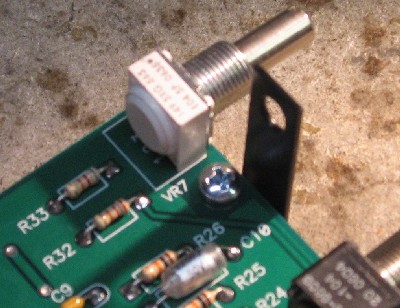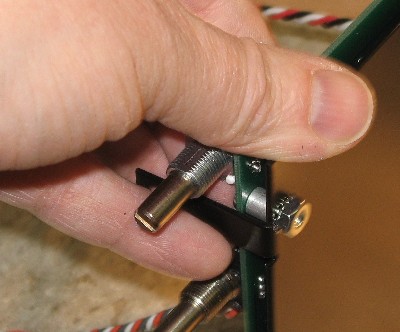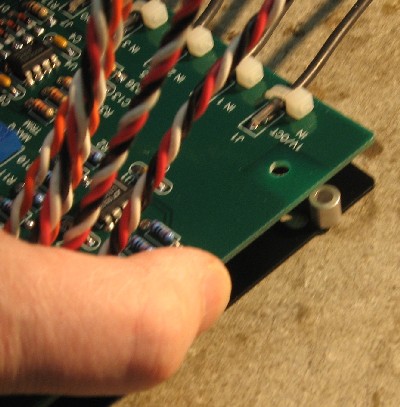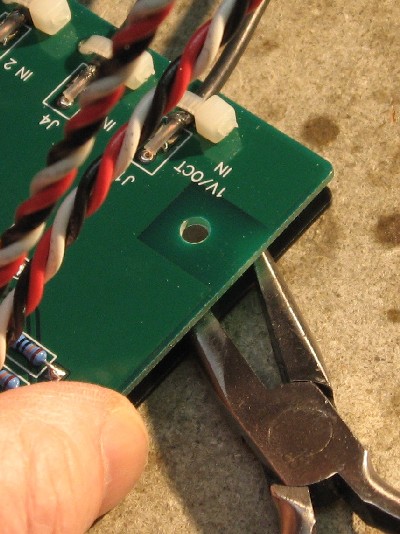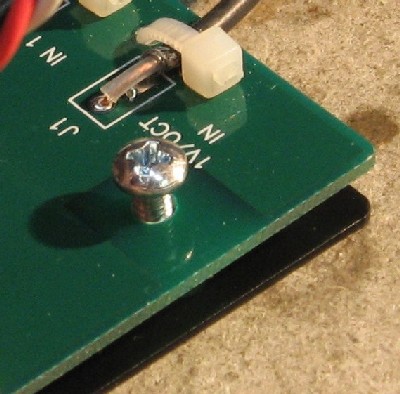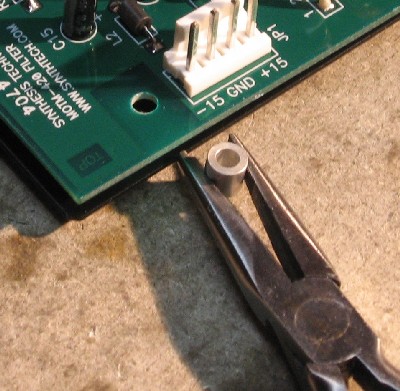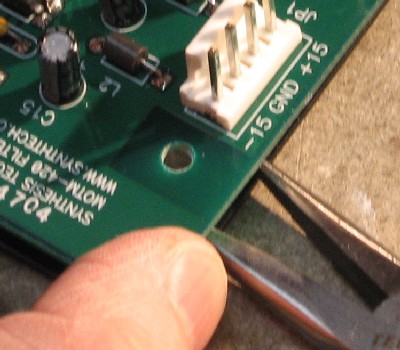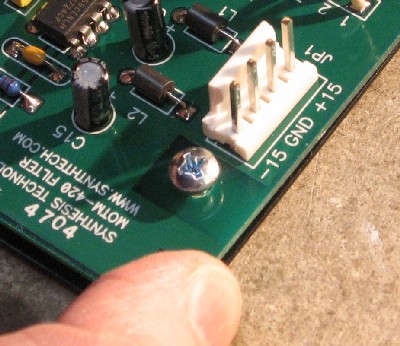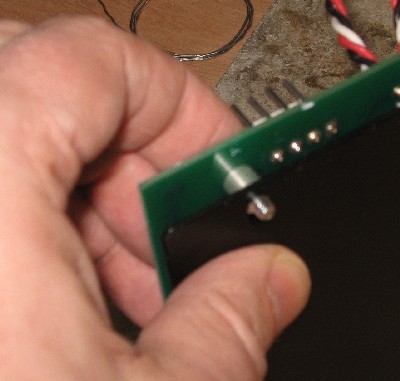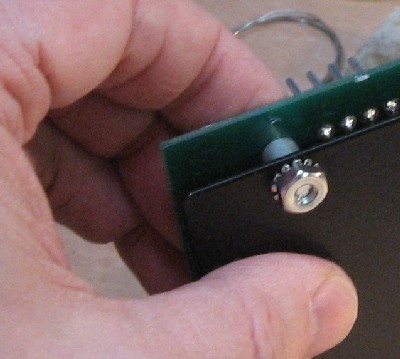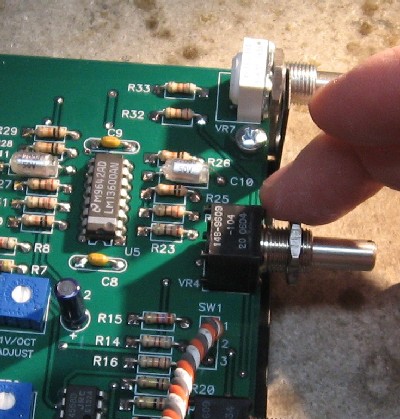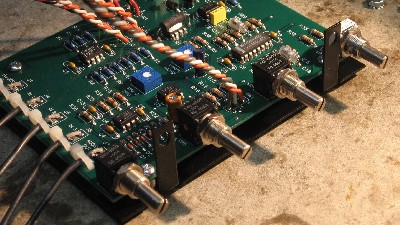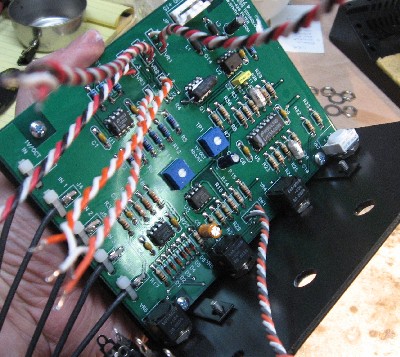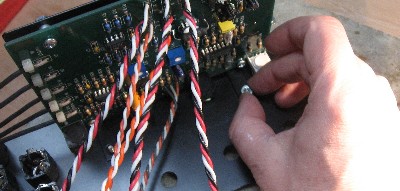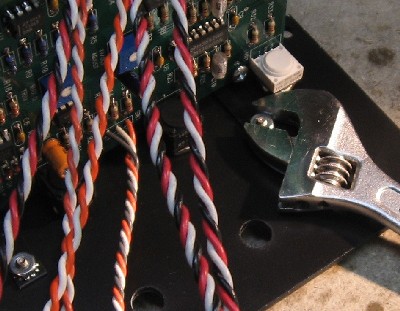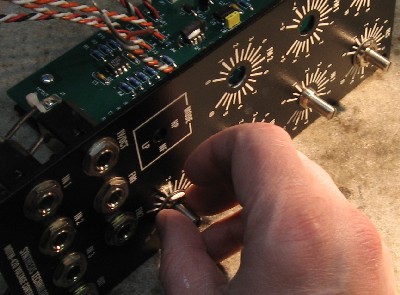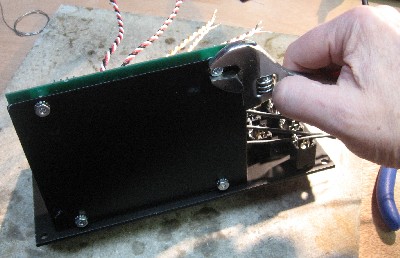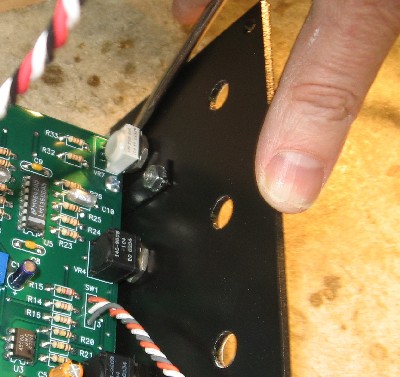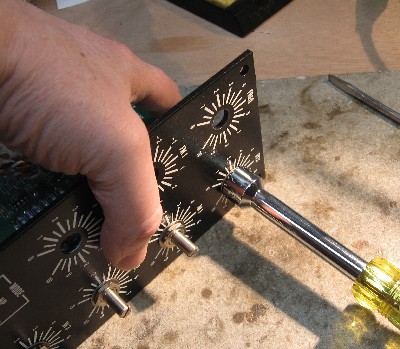Bill and Will's Synth
|
Table of Contents |
|
This page has become really long, so here's a table of contents that we hope will make it easier to traverse: Background - presents an explanation and Paul Schrieber's initial description of the Module with a photo Parts - presents a Bill of Materials for "two-dot-oh" builders and notes about it Panel - presents the MOTM format panel Construction Phase 1 - Resistors, Capacitors, IC Sockets, Power Plugs, MTA headers Construction Phase 2 - Trimmers, Panel connections |
Background |
|
Paul Writes: The MOTM-420 is a switch-selectable LP/NF/HP (lowpass/notch/highpass) voltage-controlled filter. Using the same filter structure as the MS-20, the MOTM-420 has a unique "cutting" sound that is perfect for techno, acid, house, and other dance music. The VCF will over-drive/distort in all modes, and the resonance can be cranked into self-oscillation. The LP/HP slopes are -12dB/oct and the NF is -6dB/oct. The MOTM-420 includes 2 on-board 3-channel mixers: one for audio and one for control voltages. This eliminates the need for a separate mixer module in most patches. Multiple MOTM-420's can be chained in series to exactly emulate the MS-20 filter (a HP followed by a LP). Unlike the more common 4-pole LP filters, the MOTM-420 has a brighter, "glassy" sound. This is due to the selection of parts used, and the filter design. The VCF will alter it's resonance as the input amplitude varies. This was a "flaw" in the original design, but is the main reason for the sound! The MOTM-420 has 3 separate audio inputs, that can take audio signals from any other synth, drum machine or sampler. By using a "direct box", you can run a guitar or bass through it. Use a voltage-out pedal for sweeps as you play. |
Parts |
|
OK - so - In 2008 (or about that time), Synthesis Technology stopped producing full-blown kits, and moved toward what Paul calls "2.0" (two-dot-oh) DIY. This assumes the builder will buy certain parts from Synthesis Technology - PCB, Panel, and in some cases a Special Parts Kit of the particularly hard to find parts - and will get the rest of the parts from Mouser or Digikey or - well - wherever. For those who are building this as a "two-dot-oh" project, Will and I, with feedback and review from others, have developed a parts-list / bill-of-materials in the form of an XL spreadsheet (as usual). Please don't take it as gospel. We've been over and over it and are relatively confident in our specifications - and we hear that several people have used it successfully so you should be good. The BOM assumes that you get the "extra parts kit" from Synthesis Tech. Synthesis Technology offers some parts like pots and knobs at particularly good prices... these options are offered in the BOM. Click here to download our XL spreadsheet Parts List |
Panel |
|
If you're building this as a "two-dot-oh" project, we also assume you get the panel from Synthesis Technology: |
Construction Phase 1All the stuff in Phase 1 gets soldered using "Organic" Solder. At every break in the action, we wash the board off to get rid of the flux. |
|
Resistors |
|
|
|
Capacitors - ICs - Misc |
|
Via Holes |
|
|
|
|
|
Construction Phase 2 All the stuff in Phase 2 gets soldered using "No Clean" Solder. |
|
Pots, Temco, Wires |
|
Prepare the panel |
|
|
|
Bracket |
|
|
|
Wiring the switch |
|
Panel mounted pots |
|
Mounting them to the panel |
|
Wiring the jacks |
|
|
|
Knobs |
|
Construction Done |
Set up / Testing |
Use Notes |
|
|
|
The fine Print: Use this site at your own risk. We are self-proclaimed idiots and any use of this site and any materials presented herein should be taken with a grain of Kosher salt. If the info is useful - more's the better. Bill and Will © 2005-2011 all frilling rights reserved
|

